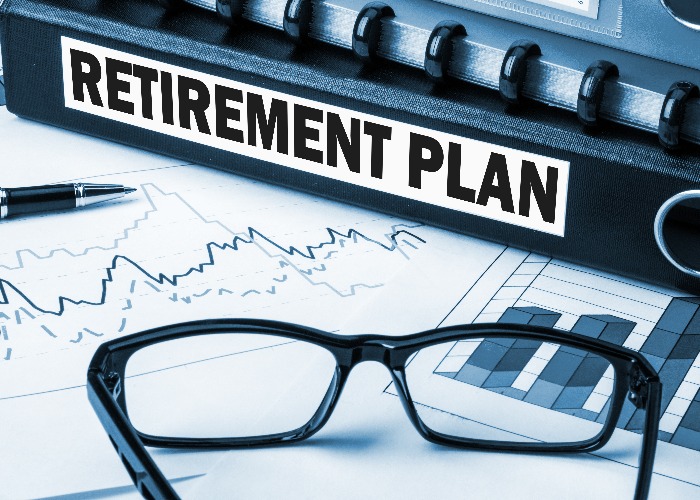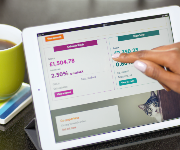Find out how much you need to save for retirement

Research shows millions of workers worry their money won't last in retirement. Use our guide to work out how much you need to save for a comfortable retirement.
Sections
Calculate your outgoings
You need to have an idea of how much money you'll be spending during your retirement.
Many costs, such as raising children and paying the mortgage, should be long gone when you reach retirement. Other costs, such as heating and water bills, might go up.
Some retired people need a fraction of what they needed when they were younger and others, particularly if they decide to travel a lot, need more.
It's worth making a detailed breakdown of the outgoings you think you'll be paying for in your retirement.
This calculator from Standard Life can also help give you an idea of how much different lifestyles could cost and how much money you'll need.
Don't worry that you might get it wrong or that your needs and wishes will change by the time retirement arrives. We'll deal with that problem by the end of this guide.
Now comes the really difficult part – taking a guess at how long you might live for. Currently, 81.5 years is the UK average.
Multiply your annual costs by the number of years you think you might be retired. It's obviously better to overestimate rather than underestimate.
You might also want to consider anything you want to leave to your family.
Make a note of the total and keep the detailed breakdown of all your expected outgoings.
Start saving for your future: compare Self-Invested Personal Pensions (SIPPs)
Income Tax
Another outgoing you'll probably have is Income Tax.
Use this Income Tax calculator to get a rough idea how much tax you'll pay in retirement. This can be a bit fiddly, but there's probably no point being too precise at this early stage.
To use the calculator:
- ignore the year column;
- change the age field to your desired retirement age range;
- type in your annual outgoings, plus £1,000 extra; and
- press Calculate.
The results will show a yearly “net wage”. If that is roughly the same as your outgoings from step one, you can proceed on the assumption you'll pay around £1,000 in Income Tax.
If the net wage is wide of the mark, you'll have to press 'Back' on your browser and use trial-and-error to get the net wage closer to the outgoings you estimated in step one.
Once you're reasonably happy with your estimate of taxes, add that to your outgoings in step one. You should now have total expected outgoings including taxes.
State Pension
Estimate your future State Pension income using this State Pension calculator.
The calculator will show your pension on a weekly basis, so multiply the answer by 52 for your annual pension.
And bear in mind it won't show National Insurance contributions or credits for future years yet. The full State Pension for those qualifying after April 2016 stands at £155.65. You'll need 35 qualifying years to get that.
If you're not confident the Government will be as generous by the time you retire, you could play safe by halving that estimate.
Write down your estimate.
Start saving for your future: compare Self-Invested Personal Pensions (SIPPs)
Workplace pensions
You might have a pension scheme through your employer and others from previous employers.
Ask the pension scheme administrators for benefits statements, so that you can get a projection of the annual retirement income you'll get from your pensions.
If you don't know what pensions you've got, or can't find them, use the Pension Tracing Service.
Add up the estimates of your future retirement income from all the pension schemes.
Read: Pension tax relief changes coming?
Your retirement income
Add together:
- the State Pension estimate from step three; and
- the annual pension estimate from step four.
If this total amount is higher than your expected outgoings from step two (which includes your estimate of taxes), it looks like you're on course for a comfortable retirement.
Don't forget that this is just a projection with lots of assumptions.
Your retirement balance
Deduct the total in step five with your total from step two. Write this figure down.
Other savings and investments
Now we turn to any other existing savings and investments for retirement, which might include cash savings, stocks & shares ISAs, personal pensions, stakeholder pensions and SIPPs.
Get the most recent annual statements from all these places, or contact the provider to find out the size of your funds.
Add them together with the value of any existing pensions (minus Income Tax) from the previous step.
Invest tax-free: compare stocks & shares ISAs
Reaching the right retirement pot
The moment of truth.
Use this compound interest calculator to estimate how much you need to save each month to reach your required retirement pot. To use the calculator:
- type in your answer from the first step;
- type in how many years you've got before you want to retire;
- type in your answer from step seven;
- type in an estimated annual return, for which we suggest you type 2.5 (more on that shortly).
The calculator should now tell you how much you need to save.
Just as an example, if you want a retirement pot of £92,600, already have £20,000 in personal pensions and stocks & share ISAs, and you've got 30 years before you want to retire, your answer in the calculator should be that you need to save £95 per month.
Invest tax-free: compare stocks & shares ISAs
Hang on. Why use 2.5?
For your annual gains, we have suggested you estimate around 2.5% per year. That might seem small, but this is how much your investments might grow over-and-above inflation, and 2.5% would actually be a fine rate of return.
If inflation averages 2%, say, with your 2.5% on top you'd be getting 4.5% per year in total, which is a lot more than you should expect from savings accounts.
A 2.5% return over 30 years will double your money in real terms, meaning that despite inflation you'll be able to buy twice as much with your savings.
You'll have to keep your saving and investing costs down if you want a reasonable chance of getting 2.5% or more above inflation.
Do your research to find out how you could go about that.
Invest tax-free: compare stocks & shares ISAs
Government contributions
The Government will pay you part of your pension contributions if you're paying into a pension. If you're a basic-rate taxpayer type the answer to step nine into a calculator and multiply by 0.8.
That's how much you should save per month.
Higher-rate taxpayers can also currently claim back through their tax returns.
A safety net
We strongly suggest you add in a safety margin. If you can afford to pay an extra £25, £50 or £100 per month, that gives you some more assurance.
Don't forget your home
If all this has left you worried about the future, don't forget if you own your home then this is an asset you can use too.
If you're facing a shortfall in income, you could downsize or, as a last resort, use equity release to free up some of the value of your home to provide you with some extra cash.
Read: Best alternatives to equity release
Revisit step one again... and again
What you expect you'll need in retirement will change over time, and your savings and investments won't perform as you forecast. The income you might get at the end can also change.
That's why you'll have to repeat this exercise once per year to ensure you're on track. Do this every year and you should be able to stay on track with just minor adjustments, and few major shocks and surprises.
Most Recent
Comments
Do you want to comment on this article? You need to be signed in for this feature








